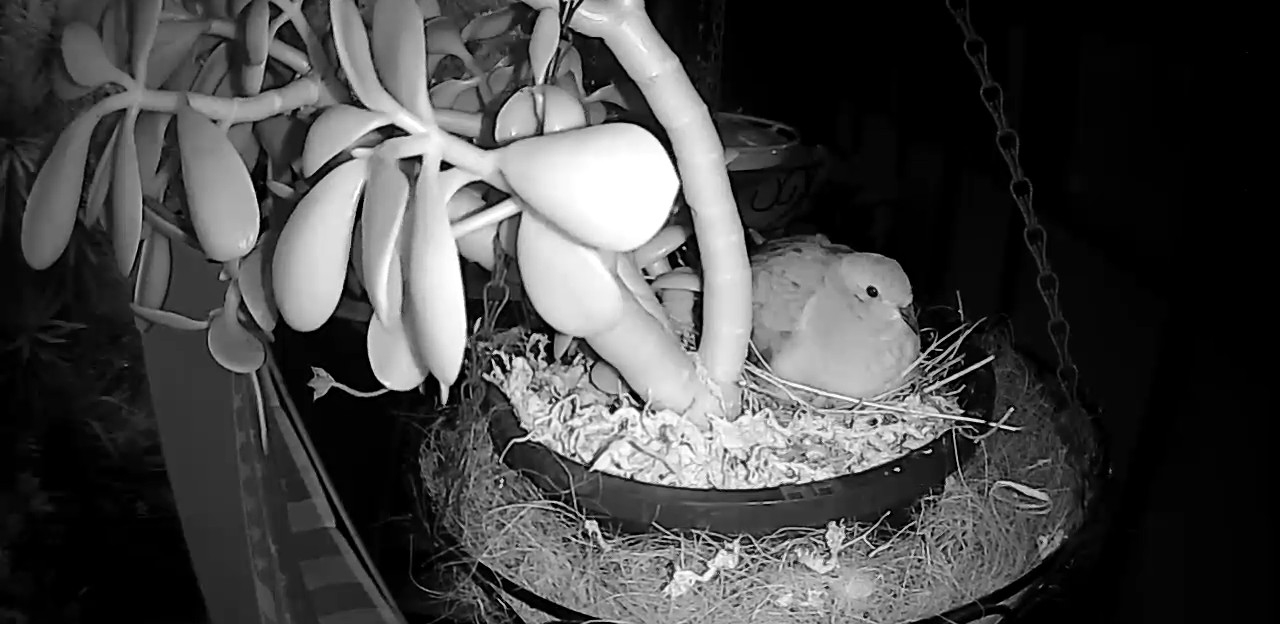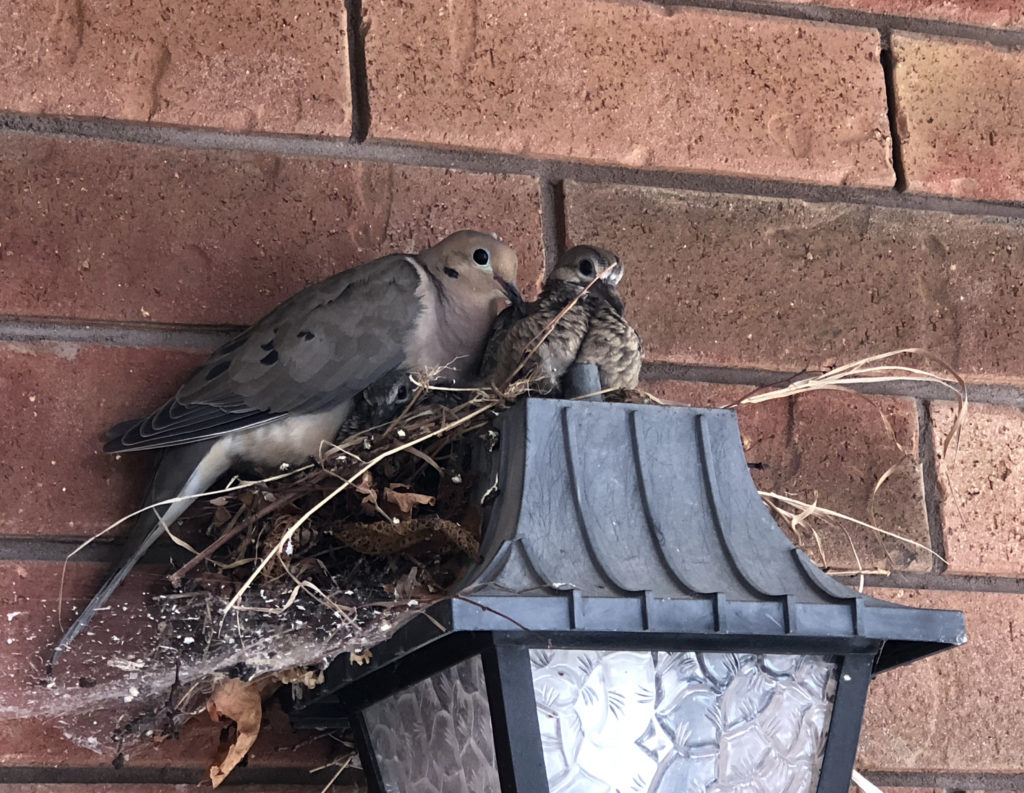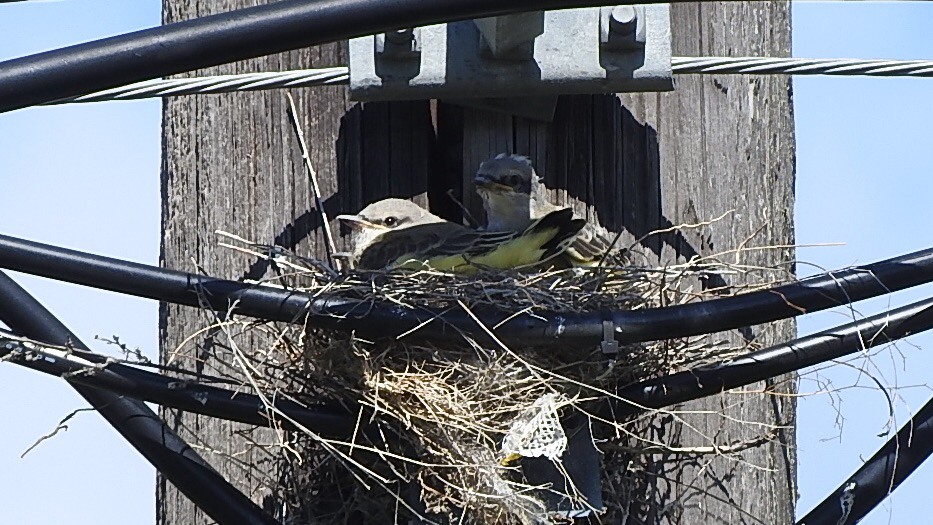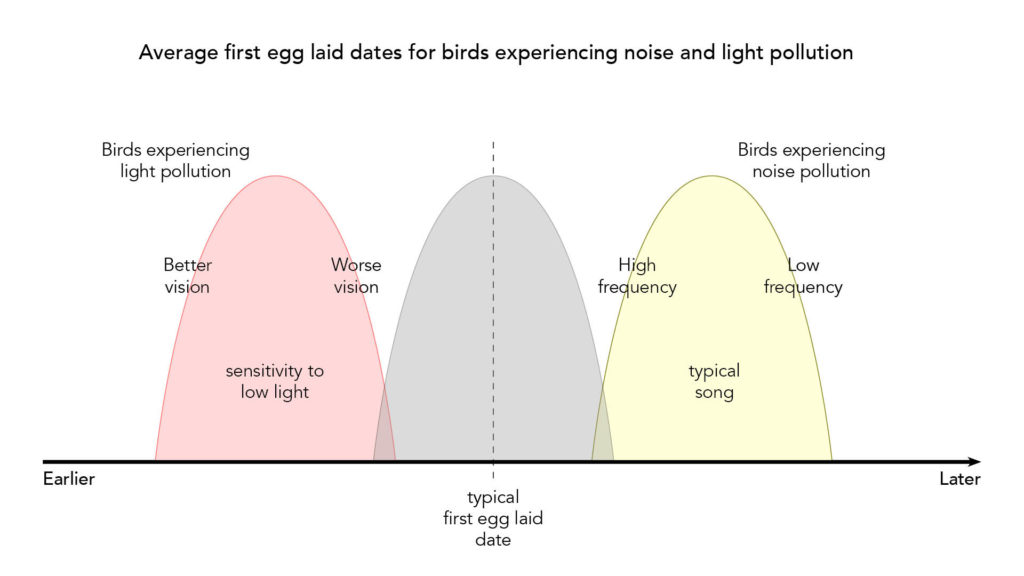 Photo ©
Kim Harlow
Photo ©
Kim Harlow
by Robyn Bailey, NestWatch Project Leader
An international team of researchers has just completed one of the world’s most comprehensive studies on the effects of noise and light pollution on nesting birds. Published today in the prestigious journal Nature, the new study utilizes 58,506 nest records from 142 species spanning 14 years. These data, which were collected by participants in the NestWatch citizen-science project, were combined with continental-scale data on noise and light pollution to elucidate impacts on the timing of nesting, nesting success, clutch size, and hatching failure.
As you might expect, noise and light pollution commonly coincide in built environments. Teasing apart their separate effects required data from all across the rural to urban gradient, from quiet to noisy, from dark to lit. Gathering the vast data necessary for such a study could only be accomplished by the use of volunteer nest monitors. “It required having many eyes and ears and these nest monitors collecting data where they lived,” said study co-author Caren Cooper of North Carolina State University. Data on ambient conditions were largely gathered remotely, via either satellite (light pollution) or long-term acoustic monitoring and modeling (noise pollution).
Seeing The Light

Neighbors On Their Nest
These Mourning Doves nested atop an outdoor light fixture, just one of several kinds of support structures that are attractive to the doves.
Each species varied in their responses to excess light based on whether their nesting habitat was more open (think wetlands, fields, and farms) or closed (as in forests), and how sensitive their eyes are to light levels. For example, birds that nest in open habitats located in the brightest-lit areas began laying eggs an average of one month earlier than those in darker areas. Forest birds also advanced their lay dates by about 18 days, and their clutch sizes were 16% larger in well-lit compared to darker areas. Birds with higher sensitivity to light and those that nest in cavities (dark tree holes and nest boxes) were more likely to advance their laying dates when exposed to more light as well. This makes sense when you consider that birds are highly attuned to day length as a cue for when to start breeding.
Somewhat surprisingly, species adapted for low-light conditions experienced an improvement in nest success when exposed to more light. Perhaps these species were able to take advantage of light to hunt for food more effectively. However, it’s important to keep in mind that what is positive for one species could be negative for another. For example, Western Bluebirds experienced a negative influence of light on nesting success.
Hearing Through The Noise

At Home Up High
Western Kingbirds at their nest, which appears to be supported by a utility pole. Roadside lighting and traffic are common examples of anthropogenic light and noise pollution.
When it comes to excess noise, forest-nesting birds had reduced clutch sizes, a higher likelihood of clutch failure, and decreased nest success in the noisiest areas as compared to the quietest areas. Birds nesting in open habitats did not experience these same negative impacts on reproduction. One proposed reason for this difference is that birds nesting in forests tend to sing at lower pitches, which could mean that a pair’s communication is affected when they have to compete with low-frequency human noise. This is supported by evidence from the study which demonstrates that noise pollution delayed the onset of nesting for birds with lower-frequency songs.
The Complicated Confluence
One of the key findings of the study is that things are complicated. With so many species and such spatial variation, they found both advances and delays in the timing of nesting, increases and decreases in clutch size, improvements and declines in nesting success—all depending on which habitat, lighting, and noise exposure conditions a bird might experience. To further complicate things, it is also well-documented that climate change is advancing the nesting season for many species. The study authors caution that ignoring the impacts of light and noise pollution could oversimplify conclusions drawn about climate change. For instance, if birds are only studied in urban areas or only in pristine habitats, you could draw conclusions that may not necessarily reflect bird health across the wide spectrum of sensory and climate stressors.

Effects On Timing Of Nesting
Relative timing of nesting for birds varied depending on two biological traits under study: song frequency and light-gathering ability of the eye. Birds with better low-light vision advanced their laying dates most strongly in the presence of light pollution, while on the opposite end of the spectrum, birds with lower song frequencies delayed their nesting more strongly in the presence of noise pollution. (click to enlarge)
Study co-author Clinton Francis thinks that this could be a first step towards developing a “sensory pollution sensitivity index” for North American birds which could be used to inform conservation plans for declining species. The ubiquity of light and noise pollution is only increasing, and studies of animal health have lagged behind those of human health consequences. Francis expressed deep gratitude to the volunteer observers, saying “Obtaining high quality nesting data is very time consuming, and it is amazing we were able to do this study with more than 58,000 nests. It certainly would not have been possible without the participants who carefully monitored all of the nests and submitted their observations to NestWatch.”
Reference:
- Senzaki, M., J. R. Barber, J. N. Phillips, N. H. Carter, C. B. Cooper, M. A. Ditmer, K. M. Fristrup, C. J. W. McClure, D. J. Mennitt, L. P. Tyrrell, J. Vukomanovic, A. A. Wilson, and C. D. Francis. 2020. Sensory pollutants alter bird phenology and fitness across a continent. Nature (2020): https://doi.org/10.1038/s41586-020-2903-7
What an outstanding study! thank you.
I am very interested in reading results from NestWatch data. It’s great to see where our observations are being used. We live in a dark, quiet place near a medium sized city and our nests are dark and quiet.
oh no i feel so bad for the birds people need to turn there lights and sound if there not going to use it birds are not the only ones who struggle when there a moon i usally think its the moon but its just a dumb light
I have a pair of nesting Pacific Coast Flycatchers located above my front metal door on a 3″ ledge. They were successful last year in the same area. (I duct taped the nest up both times.) But this year she’s been sitting for 26days now, but I believe the eggs are infertile. The porch light was on both last year and this year all night long. So if she returns again next year I’ll keep it off at night. I’ve had a camera on her both years and her behavior has been the same. Thank you so much for this research and this website. I just discovered it!
Good article!